You are aware that I enjoy cooking, particularly kneading pastries and other flour-based dishes.
But this article will be slightly different since I have another pair of hands that can cook extremely well and, more importantly, roll out pie crusts the way they used to be made before they were on the market shelves.
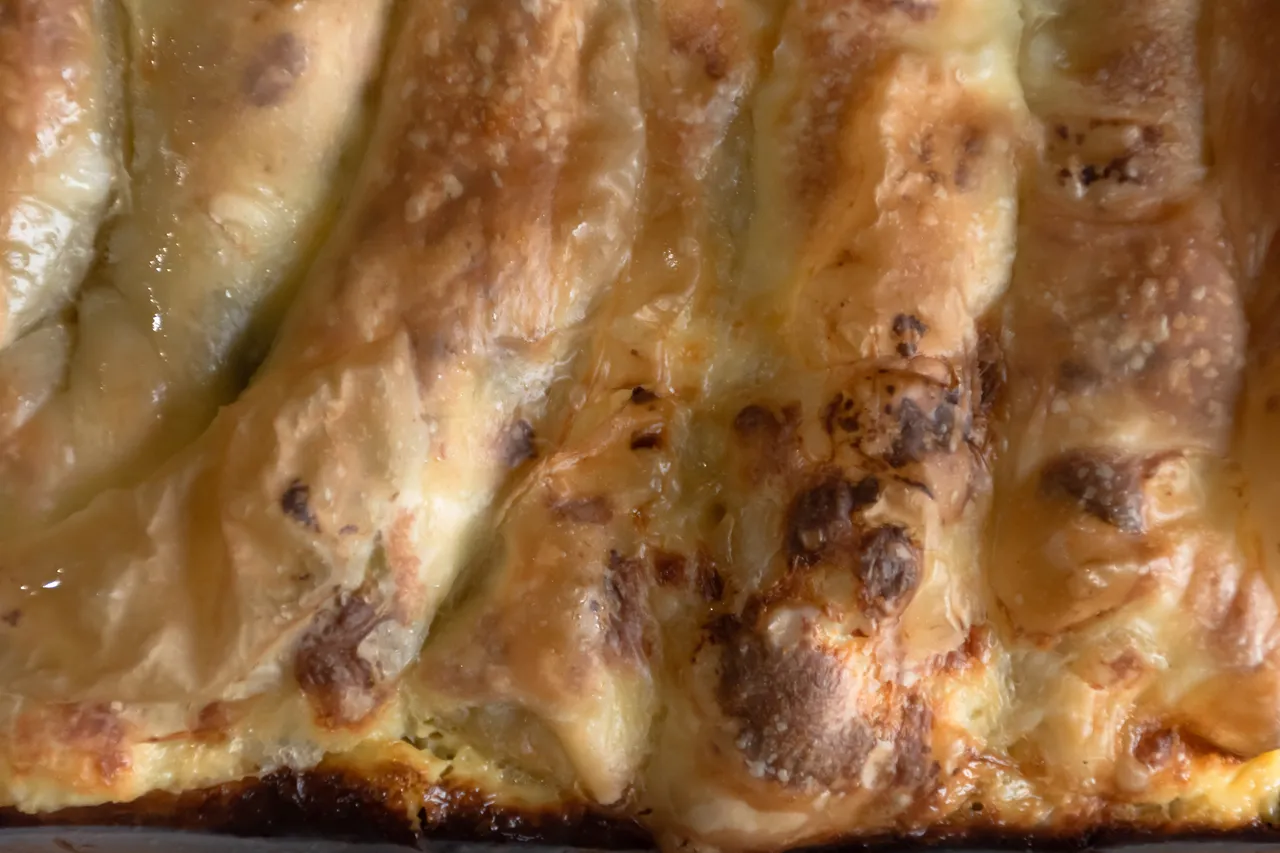
Pies in Serbia were traditionally made from scratch; to enjoy this traditional delicacy, you must have skills, patience, and experience. I tried a few of times to make them myself, but I never got good enough to match what you see in the photographs. The process of making the dough for the crust itself can take hours; no, you will not knead the dough endlessly, but it will need to rest for an extended period of time.
It used to be true that love comes through the mouth and enters a man's heart through the stomach. Specifically in the past, a bride had to be skilled in knitting, cooking, and of course making pie crusts in order to be married; otherwise, her mother-in-law would become very unhappy.
I know how it sounds today, but at least in our region, a good dowry and capabilities in home chores were required - luckily those times are over, but the tradition is still valued, at least when it comes about the food. :D
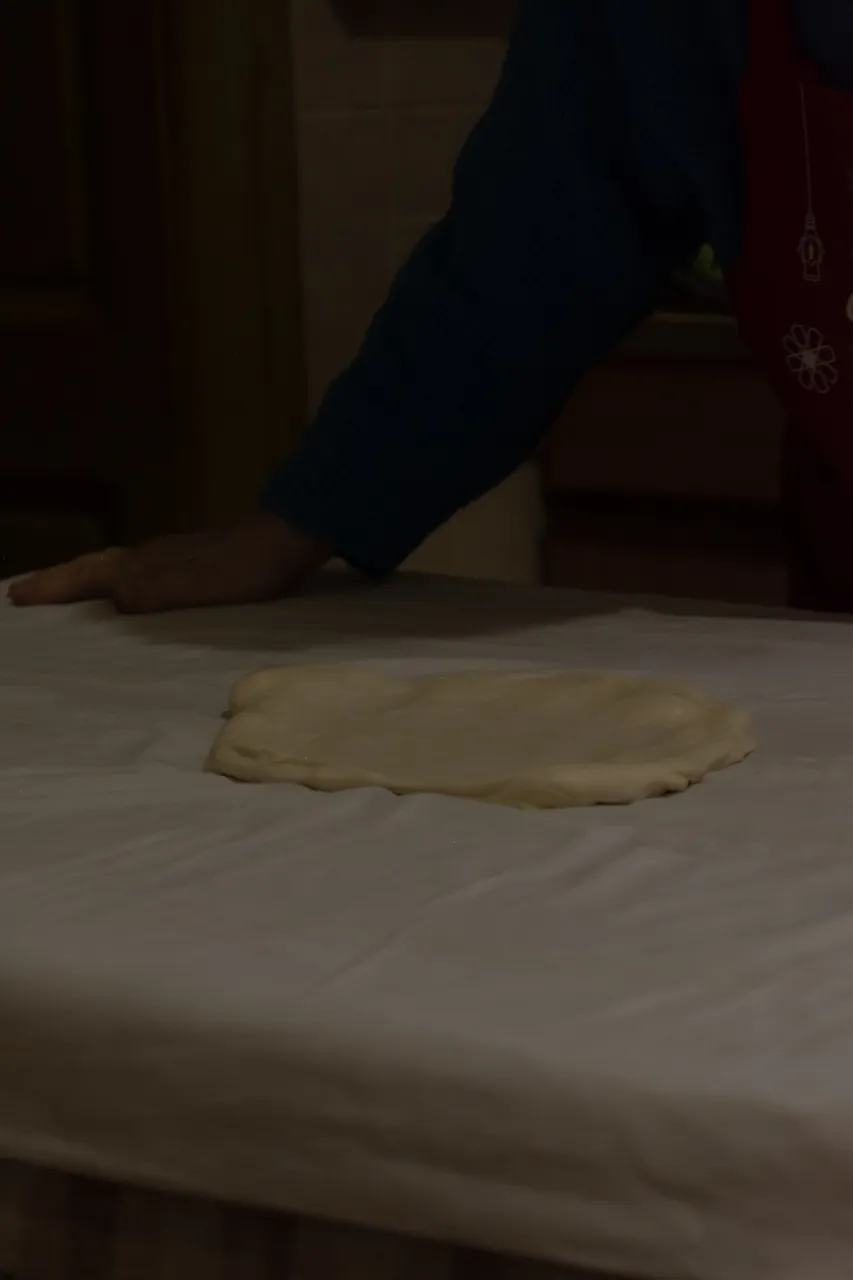
1 kilogram of all purposes wheat flour, 1 dcl of oil, 20 grams of salt, and half a liter of water are required for the dough.
I was too late to catch the details of kneading the dough, but just mix all of the ingredients, knead until the dough stops sticking to your hands, divide the dough in three parts, oil each piece generously, place it on a tray and cover it, set aside for 3-4 hours. Preparing the dough the day before, leaving it overnight in a cooler spot, and then making the crusts at room temperature is ideal.
Actually, I wasn't late, but I was too shy to ask her if I may snap a photo of her while she was working, knowing how nervous it can make people.
As you are reading this post, it is obvious that I got the permission without difficulty, gosh knows how many chances I missed in life just cause I had that "ask for it" blockade.
Another very important detail during kneading is the cloth, most often cotton cloth was used on which crusts were developed, so no sticky surfaces come into consideration!
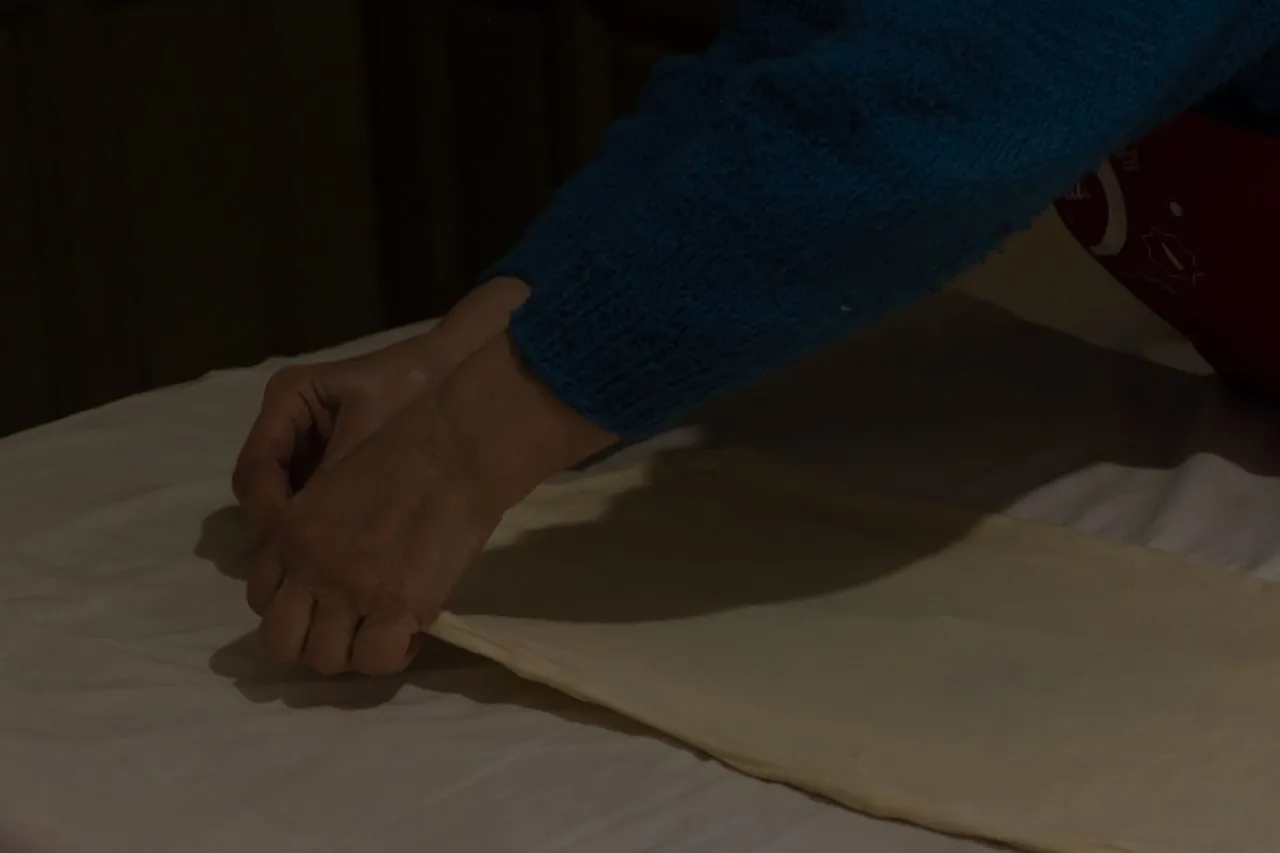
Use your hands to flatten a piece of dough as much as possible, without rough movements.
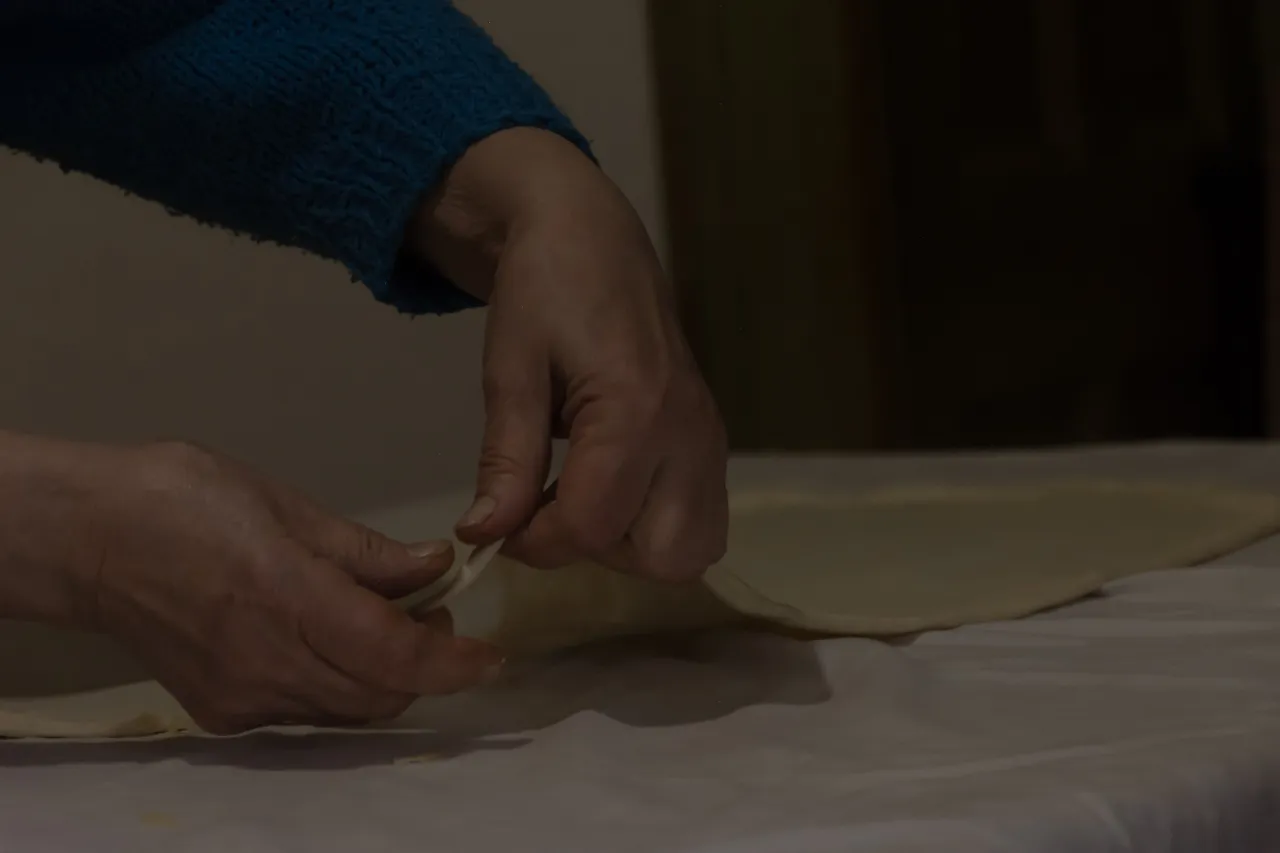
Always start from the middle and spread the edges with your fingertips. The lighting was poor, so you can see the noise in the photographs, but I think you can see how thin the dough is already. You'll also need extra room because once the crust is entirely flattened, it's the size of a table for six people.

Otherwise, this preparation method is common not just in Serbia but also in Bosnia, Macedonia, Turkey (from where we inherited it), and I suppose elsewhere around the globe.
You may add whatever you desire as filling, but we typically make it with cheese, potatoes, minced meat, and leeks. There are also sweet variations with apples, walnuts, and pumpkin, among many other options.

There were three types on our table today, with cheese, potatoes and leeks. You can add a couple of eggs to the cheese. Although potatoes are often sliced into little pieces in Bosnia, I personally like the grated variety. Spread out the filling generously all over the crust.
Elem, the thickness of the crust is measured in millimeters, and when you lift it, it is almost transparent.

Fold the edges inwards, then oil them and add more stuffing so that they are not dry.
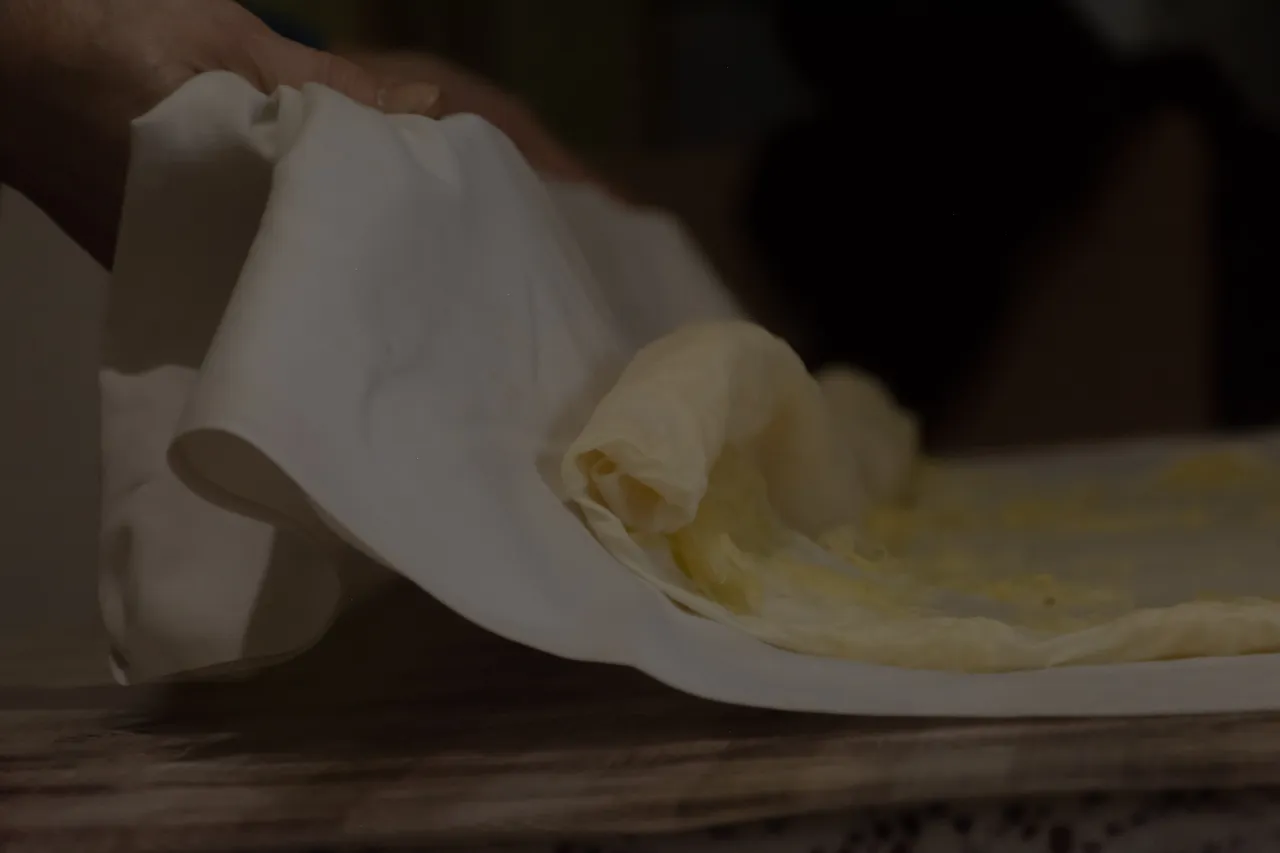
To roll it, just take the end of the cloth, lift it off the table, and let the dough to roll itself, first on one side, then the other.

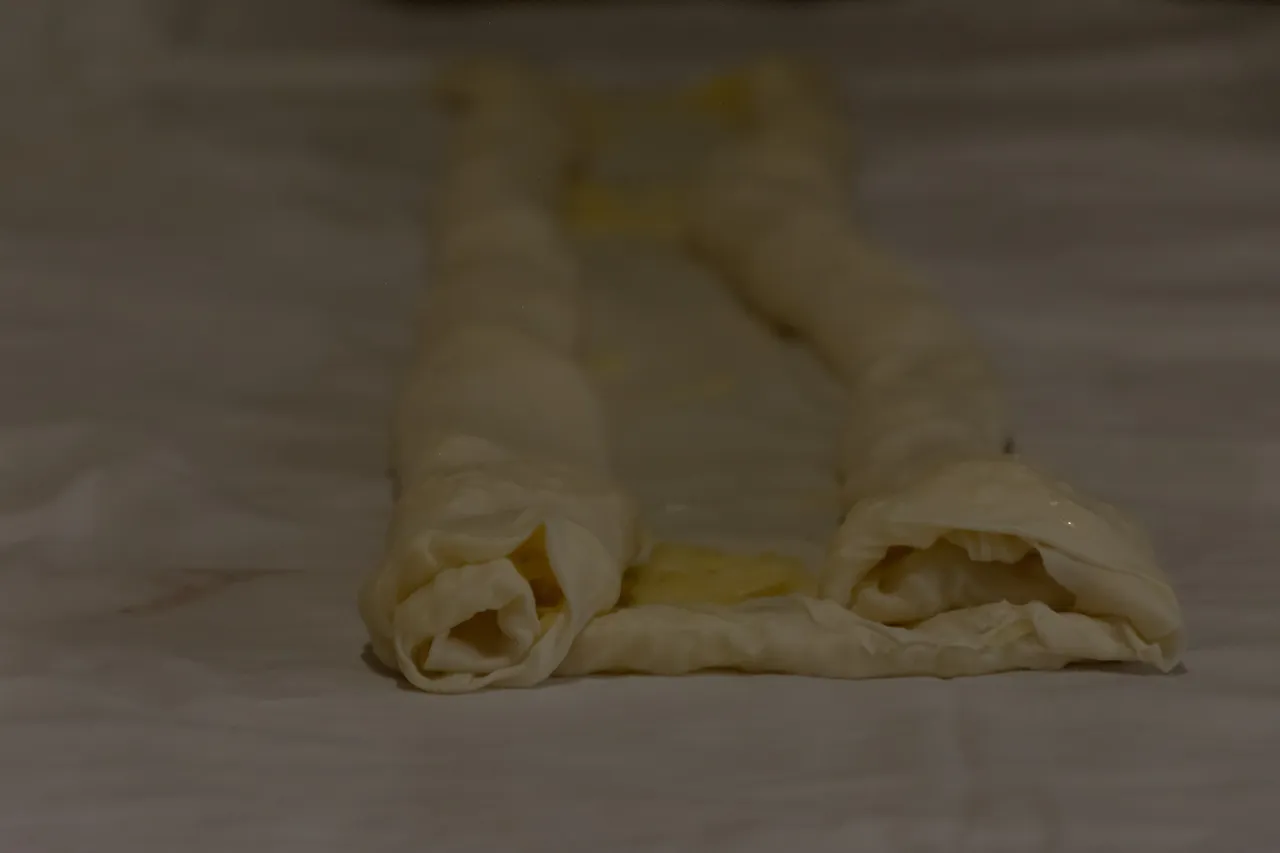
Meet me half way, cut between the two rolled sides with a knife.
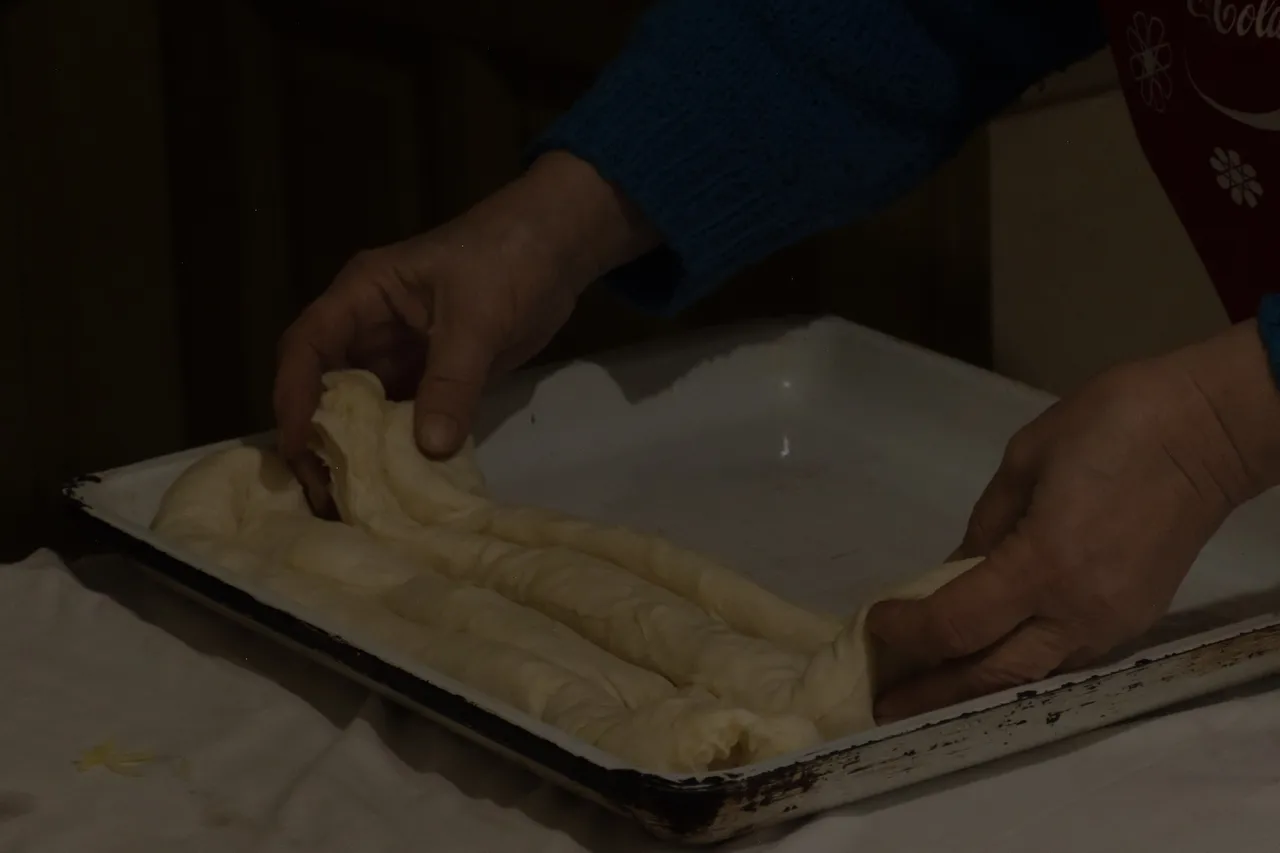
Roll each one to the end, then place on a greased baking sheet.
Yes, that's the grated potato peeking through the crusts.
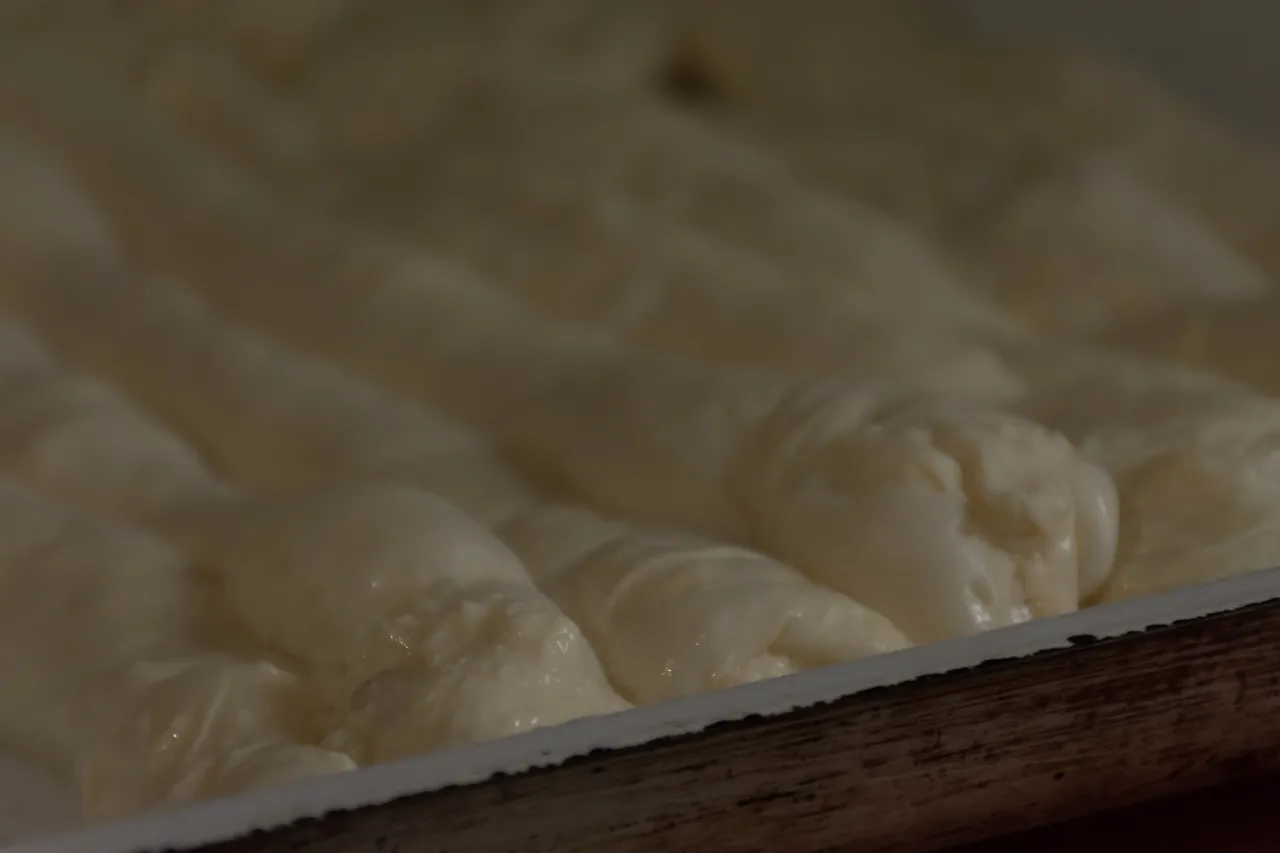
The crusts are too long when rolled up to fit in any baking pan, so fold them in half, spray a little more oil, then bake at 240 degrees, until golden brown.

I'm hoping that eventually technology will be able to transfer aromas, but in the meanwhile, you may enjoy these images of crispy pies.
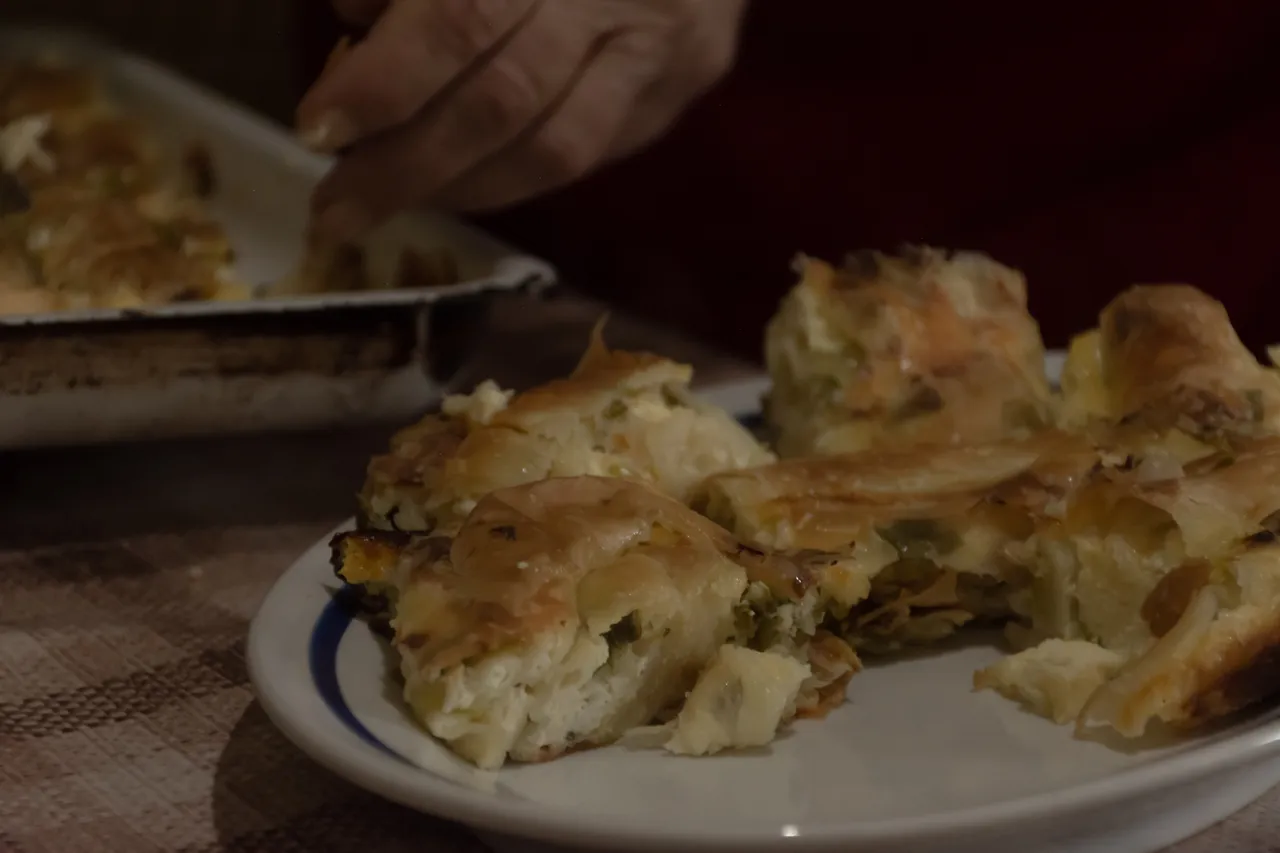
We certainly did, to the extent that there are no pieces left and I crave for more.


Bon appetite foodies!